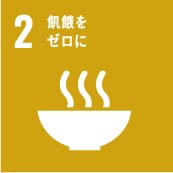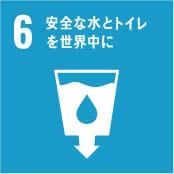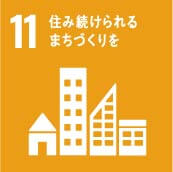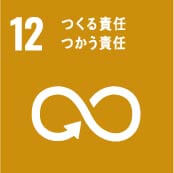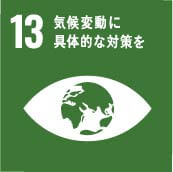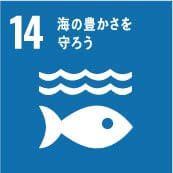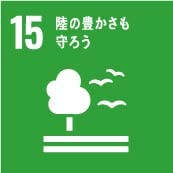Shiiba Village: A community protecting the tradition of “field burning” for future generations
- Mr. Mitsuyoshi Nasu Yokariuchi Field Burning Preservation Committee
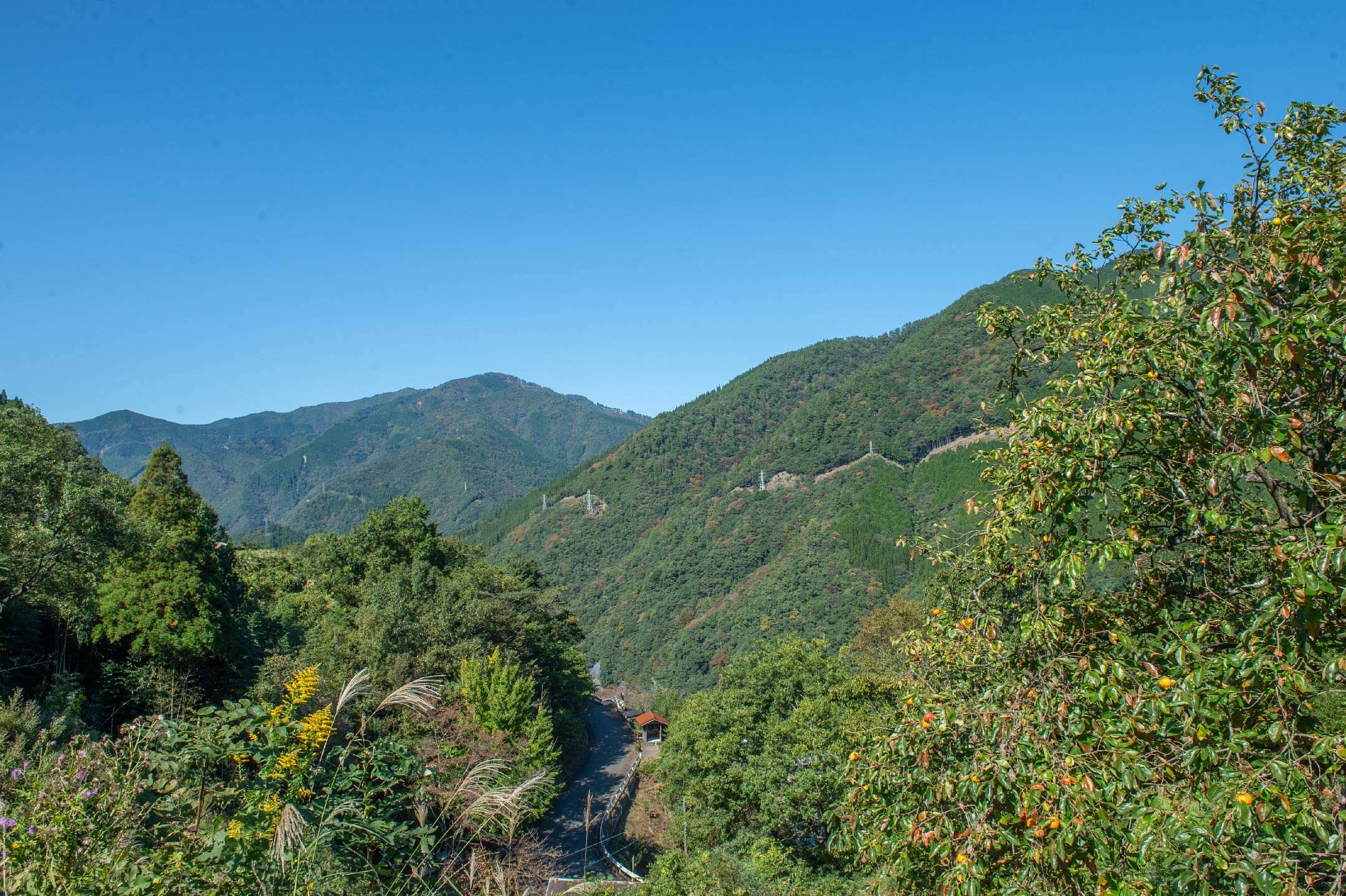
Tucked away among precipitous mountains sits Shiiba Village, one of Japan’s three greatest unexplored areas. In this village consisting of 94% forest area, traditional farming methods and cultures are still being passed on, most notably the globally recognized field burning method, which has been continuing for thousands of years.
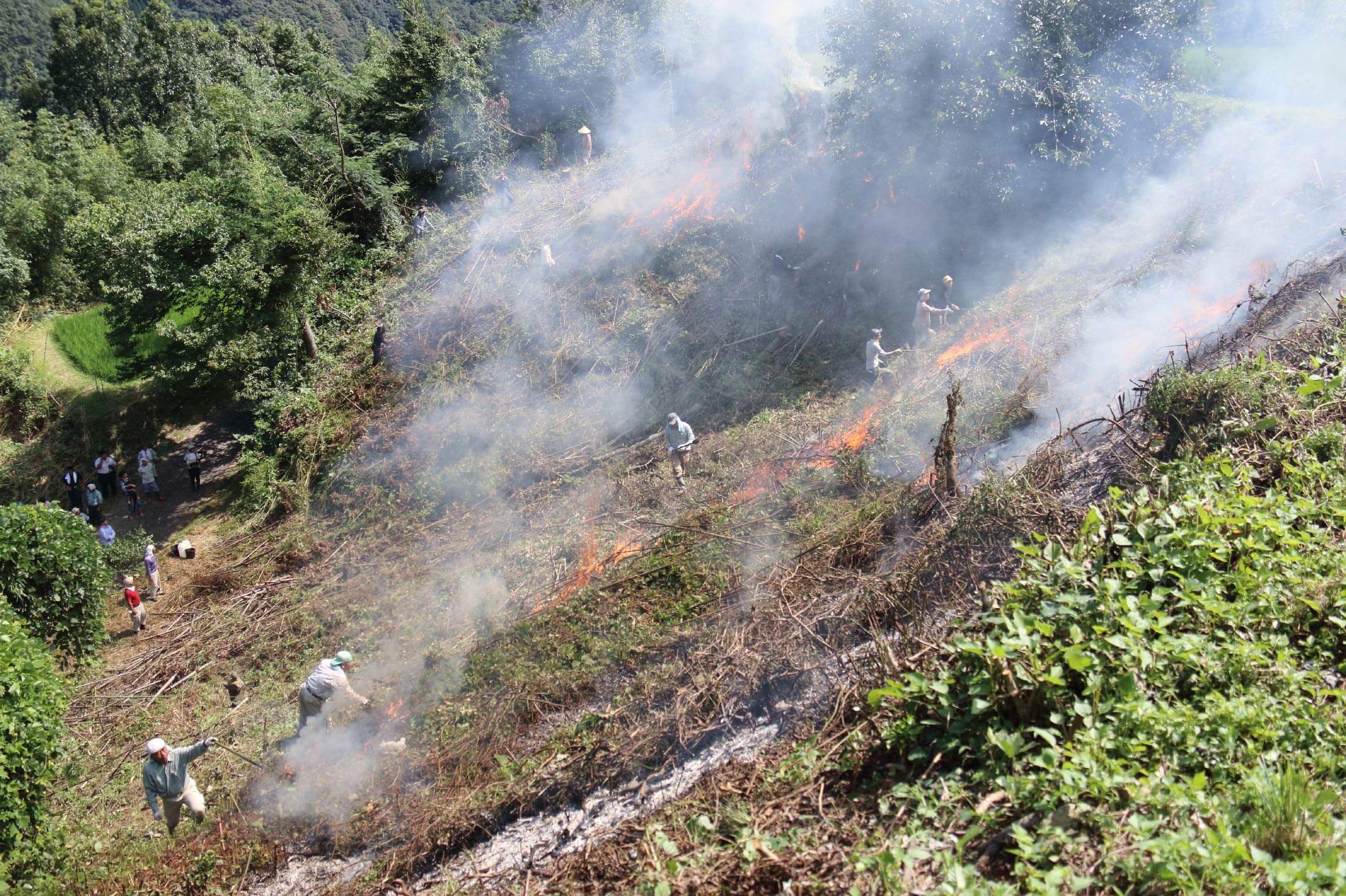
After cutting and drying the vegetation, the mountainside is set on fire starting at the top. The remaining ash from the plants is used as fertilizer, seeds are sown, and crops cultivated. The area is used as farmland for a few years before it is given a decades-long fallow period. This process is repeated in small areas in a patchwork pattern.
Since there is no need to use pesticides and the land is given ample rest, the forests slowly return to their original state. The field burning method embodies the wisdom of ancestors who respected and lived in harmony with nature.
The revival of a traditional farming method after half a century
In 2016, a year after the Takachihogo-Shiibayama Site was recognized as a Globally Important Agricultural Heritage System (GIAHS), construction business owner Mr. Mitsuyoshi Nasu founded the Yokariuchi Field Burning Preservation Committee in the Yokariuchi district in northeastern Shiiba Village and revived the tradition of field burning. The committee comprises locals of the district who share Mr. Nasu’s passion and supporters from the Shimo-Shiiba district.
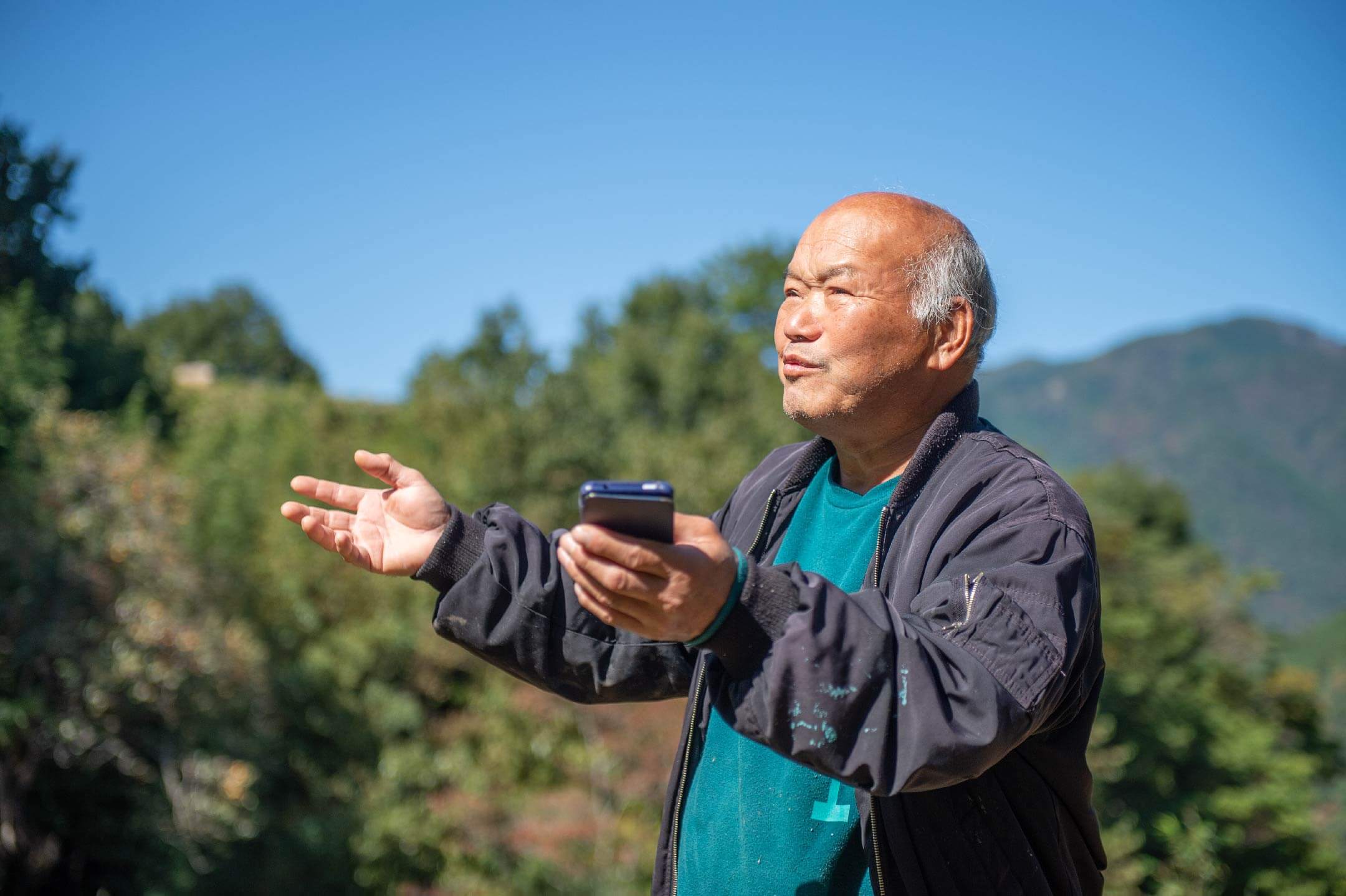
“The field burning that is still carried out in Shiiba Village is mainly for cultivating buckwheat that is planted in summer and harvested in autumn. It all started when I was talking to a woman who had moved to this area. She had field burning experience in Omukai and said she wanted to try planting buckwheat in spring, so I agreed.
Another reason why I got serious about starting field burning was that at the time, the Takachihogo-Shiibayama Site had just been recognized as a GIAHS, but the tradition was only being carried on in Omukai. To me, this was an alarming situation. We eventually ended up planting buckwheat in autumn since it produces a better yield than spring, and that was the first time in 60 years that field burning took place in Yokariuchi. We got a lot of help and advice from the elders here.”
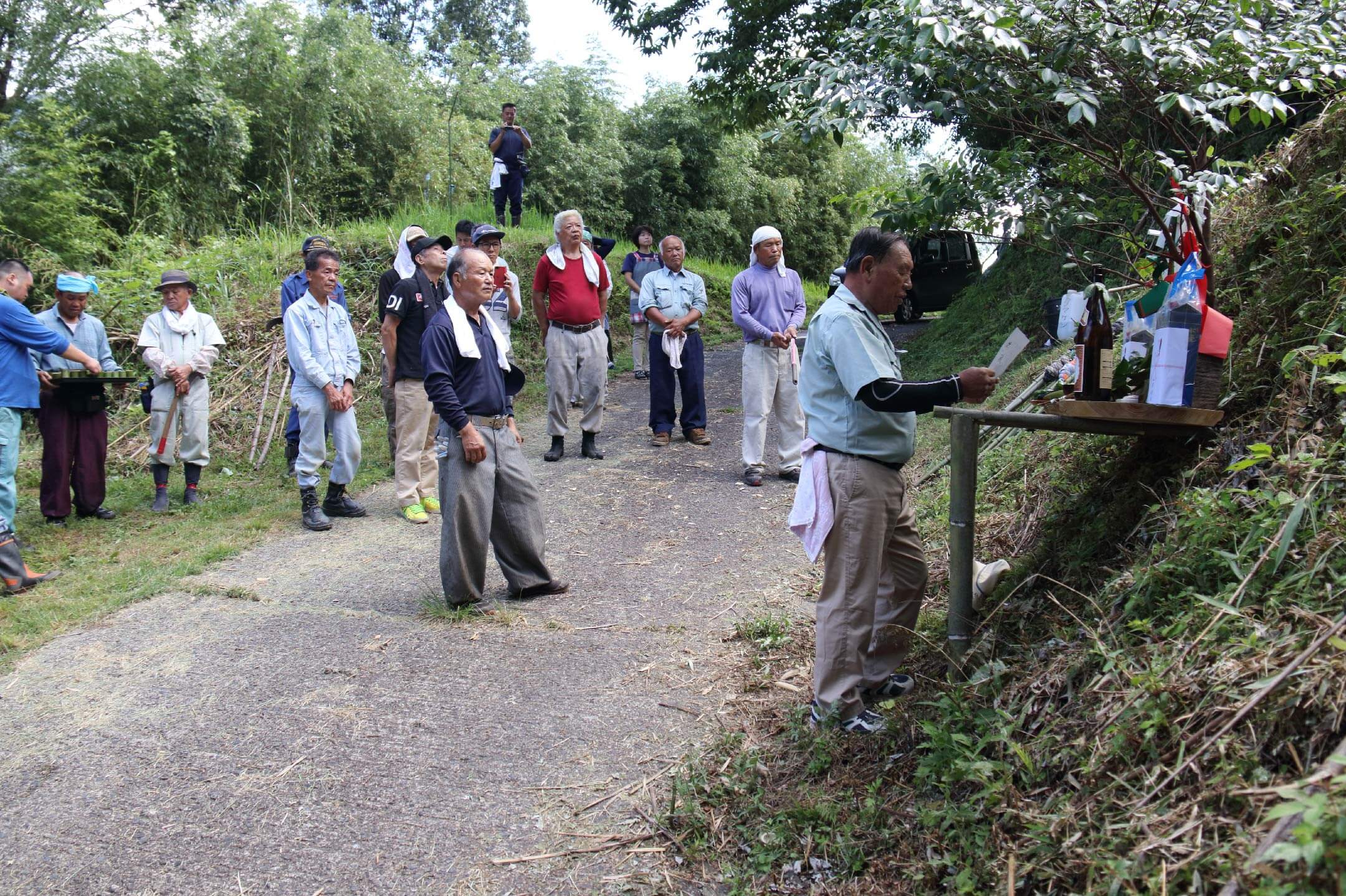
Before burning the field, sacred sake is offered to the Mountain God and a chant is recited.
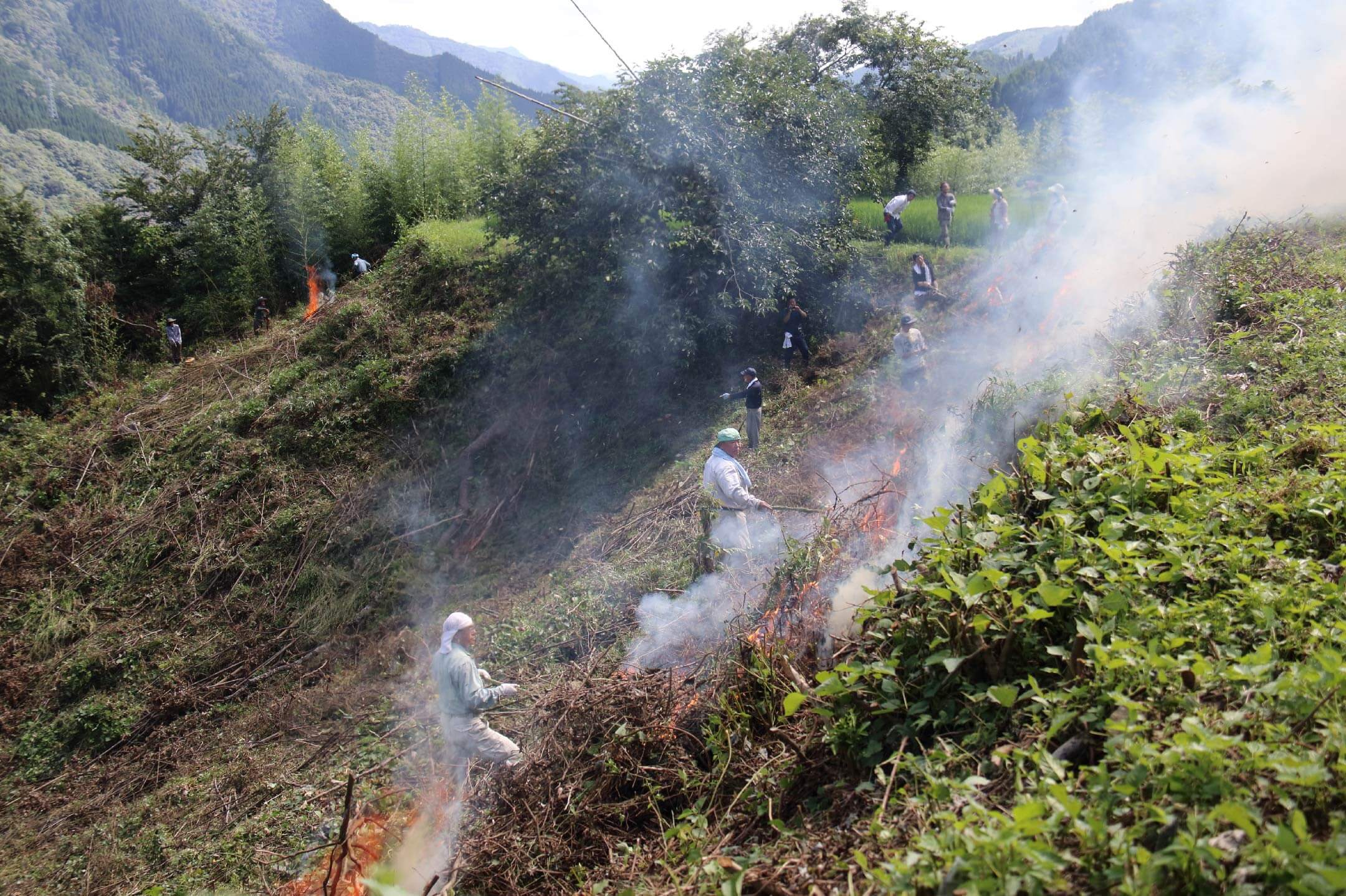
The slope is set on fire from the top, and the flames are spread downward.
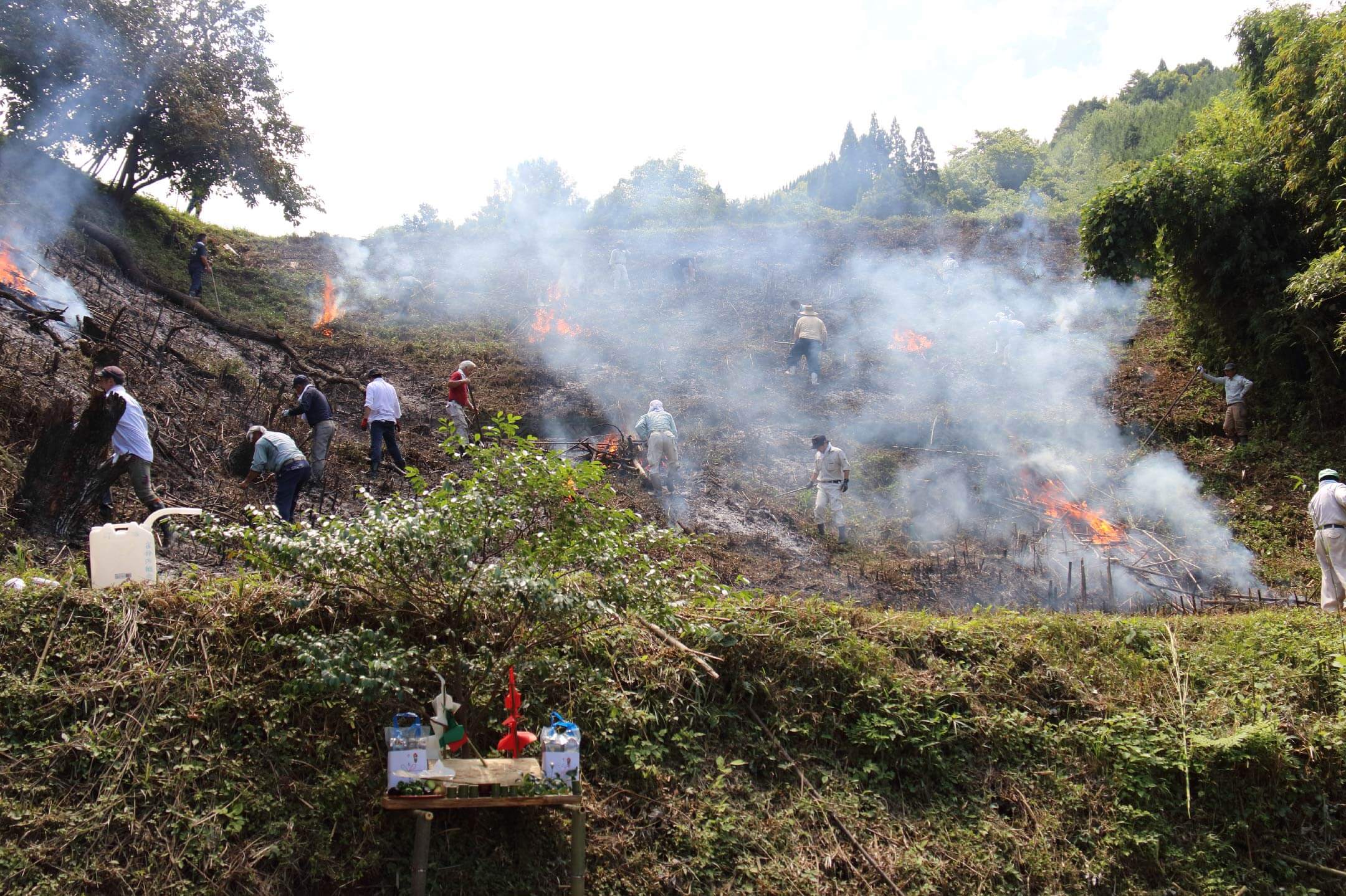
Naturally, small communities don’t have much area to burn. The harvest here is small, just enough seeds to plant the following year and to make noodles served to locals at the end of the year. However, this is still a big step for the people of Yokariuchi and Shiiba Village.
Changing mountains, unchanging passion
The impact of modern society can be felt in the remote Shiiba Village as well. As field burning uses ash from trees and shrubs as fertilizer, ample vegetation is crucial. However, these past few decades have seen Japanese cedar and hinoki cypress get planted on the mountain to produce construction material, and Mr. Nasu laments that it is getting harder to secure fields to burn.
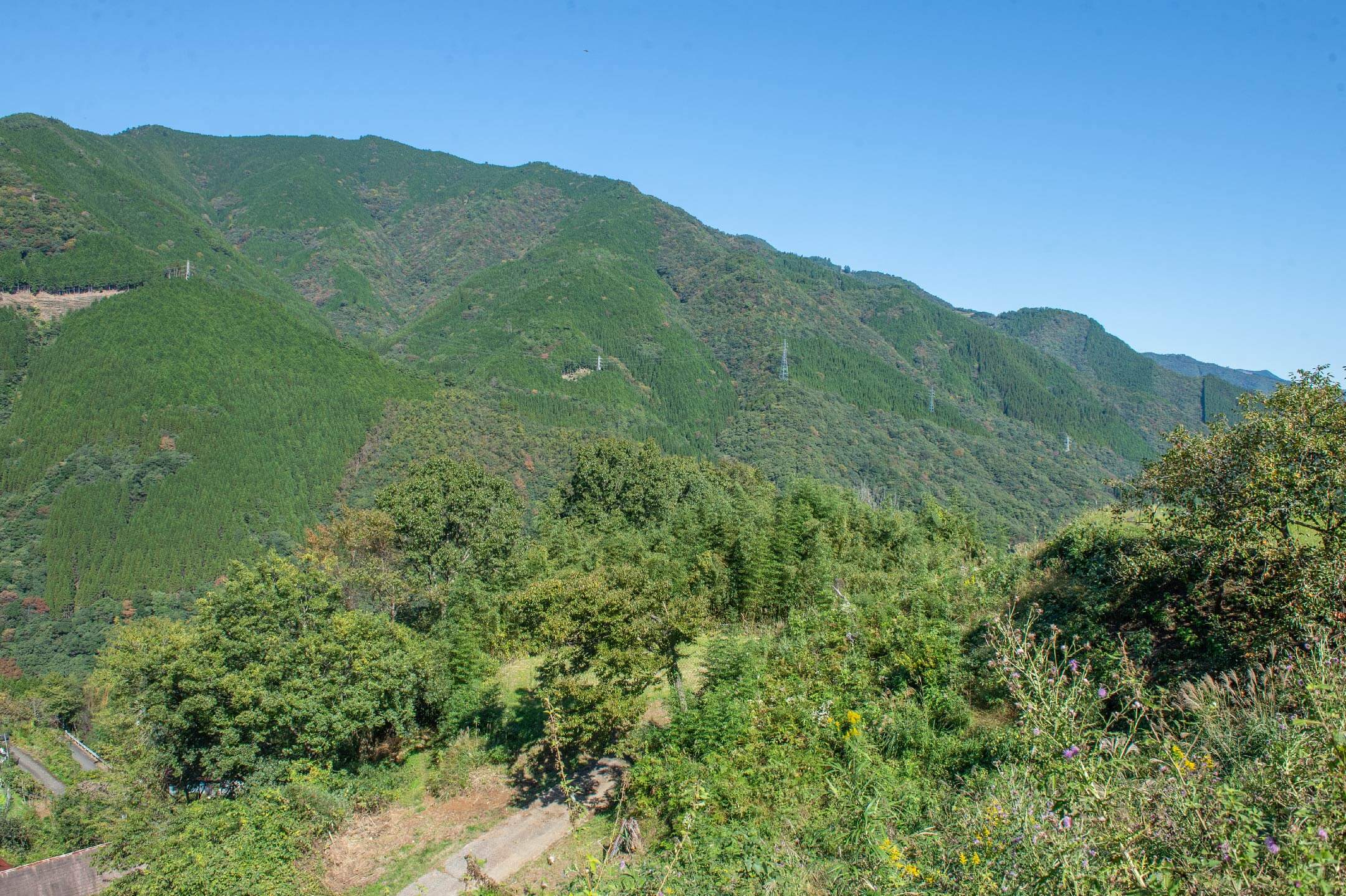
But this change in the environment is not stopping people from doing what they can to protect the field burning of Shiiba.
After the preservation committee was founded, field burning was carried out four times in the Yokariuchi District between 2016 and 2019. As of October 2021, efforts have been put on hold for the year due to COVID-19, but there are plans to resume once the pandemic subsides.
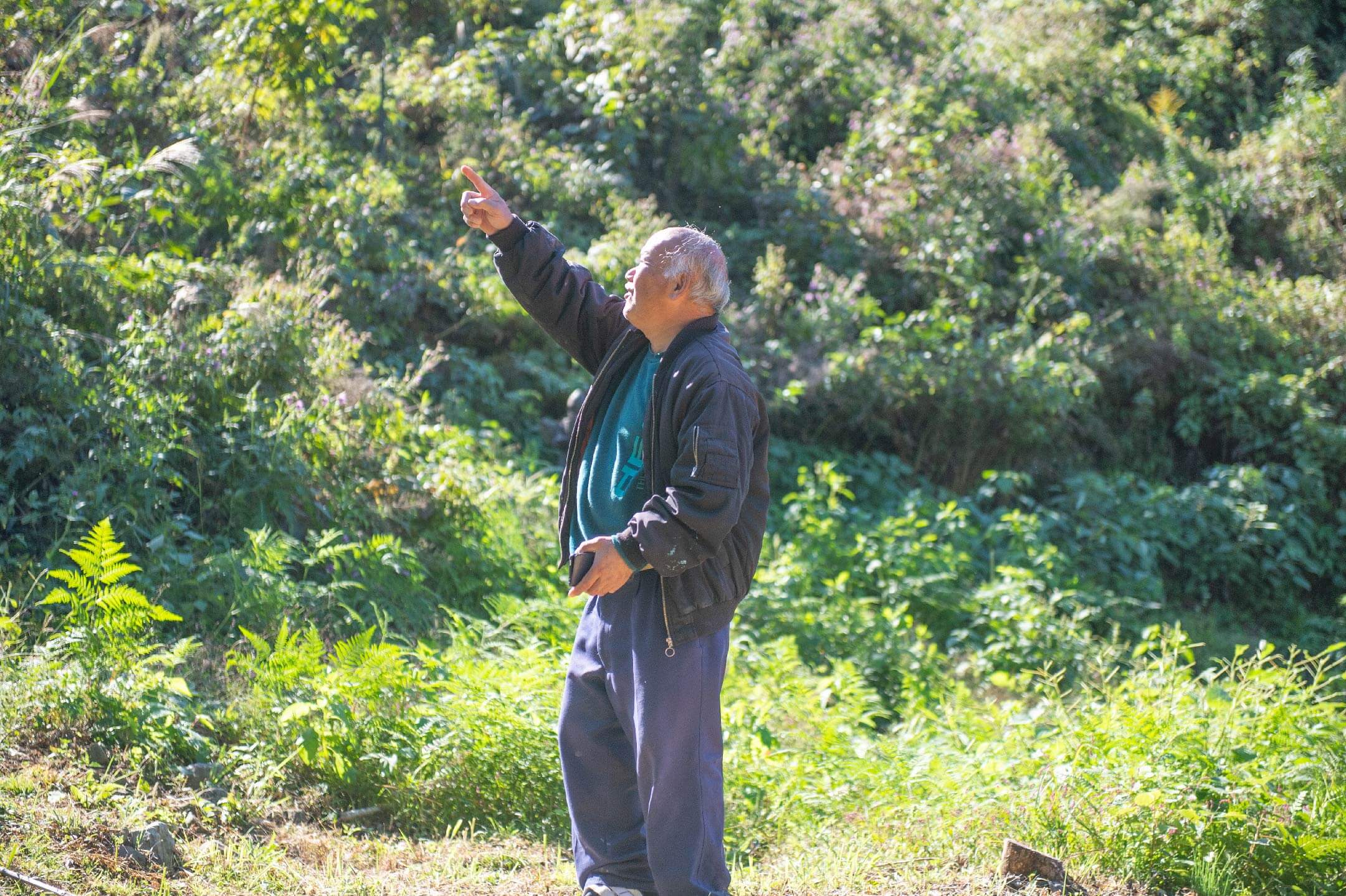
Field burning is all done manually, and it is painstaking, time-consuming labor. However, aside from local supporters, people from outside the village have shown interest, visiting to observe and help out with this rare method of farming.
Although the times may change, the people’s passion will surely keep the flames of tradition burning on the fields.



